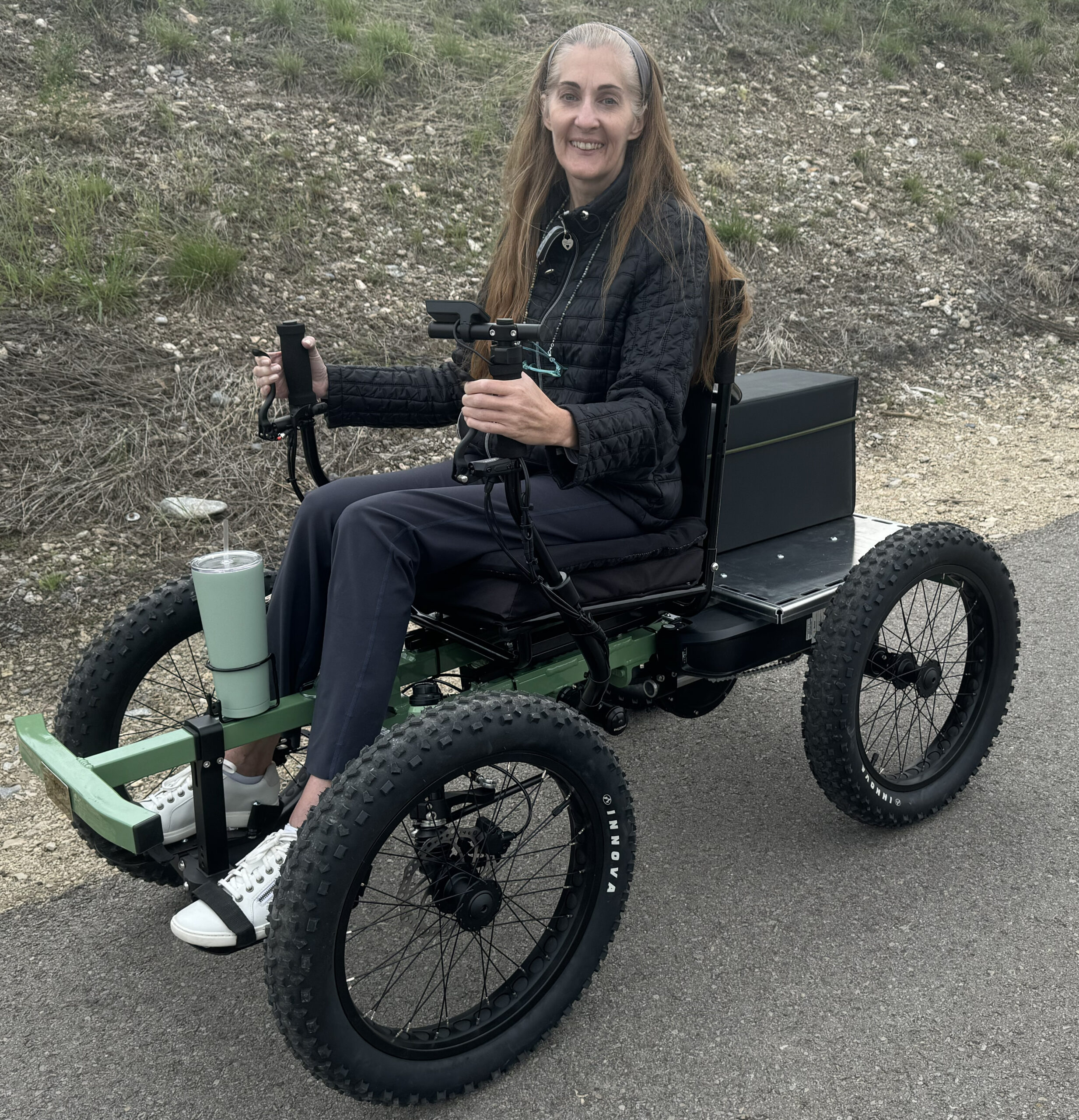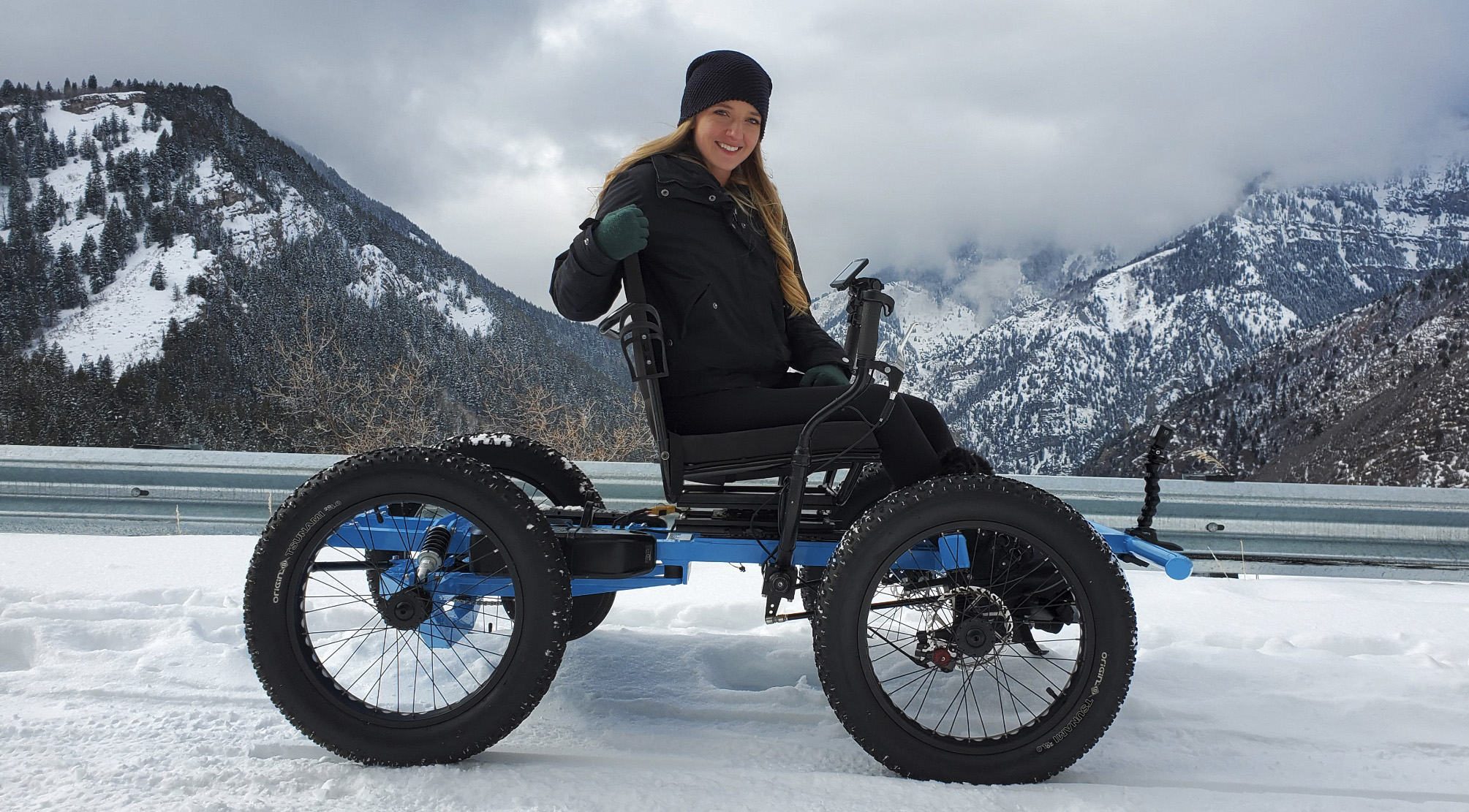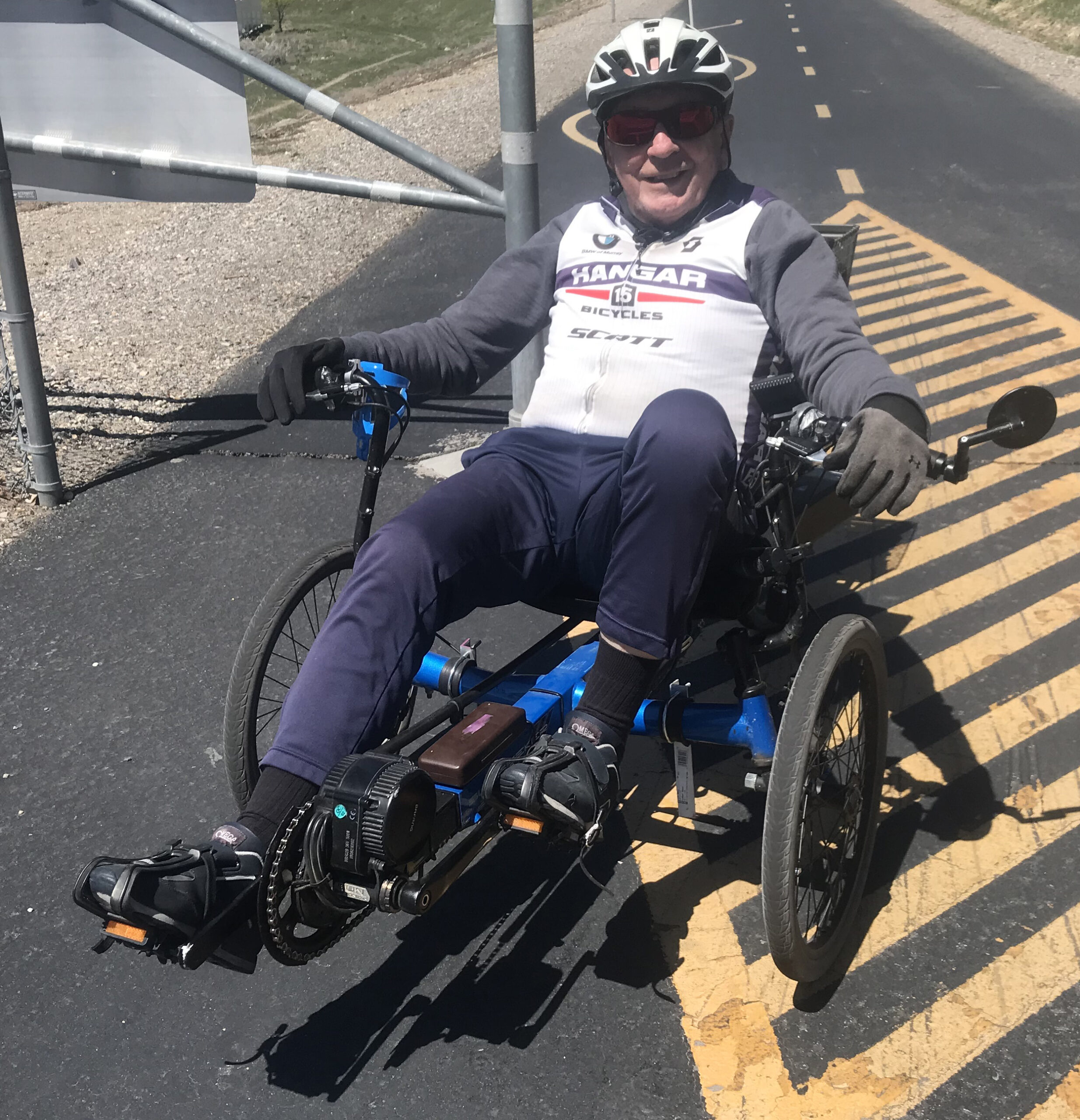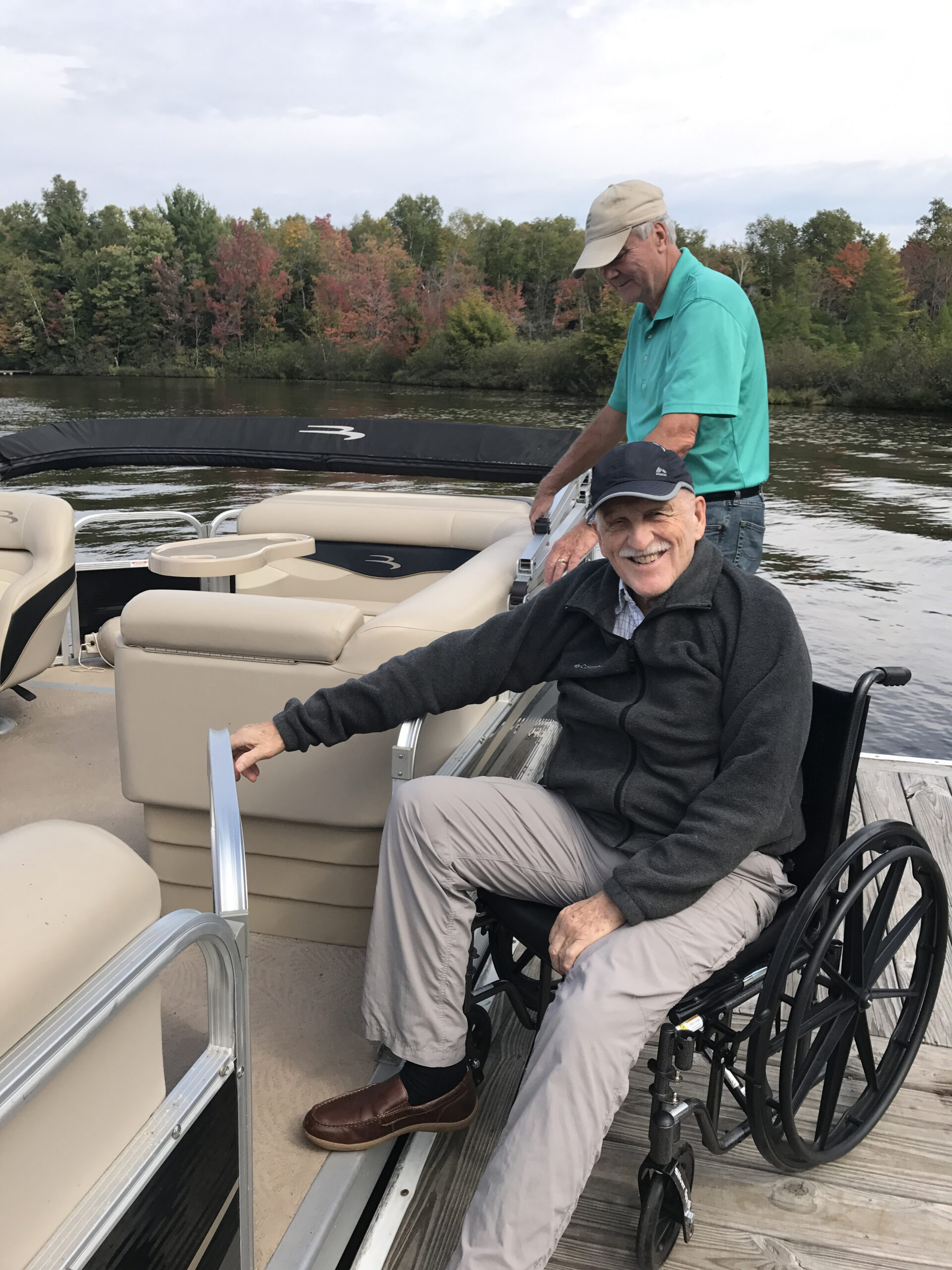Electrification to Improve the Quality of Life of Disabled Persons
Automobiles, trucks, and motorcycles displaced horses and buggies, oxen, and wagons and horses when the internal combustion engine (ICE) arrived over 100 years ago. Electric automobiles made a brief appearance early on, but battery technology was not adequate to compete with ICE vehicles. The electric motor has superior performance to an ICE because of 90% efficiency, superior torque characteristics, and near total lack of emissions. This is illustrated in the design of a railroad diesel engine. They are actually diesel-electrics. The diesel is only used to generate electricity and electric traction motors drive the wheels. If you are pulling a one-mile-long unit train where each car is fully loaded with coal, this is the only way to go. 100 years later, battery technology has advanced to the point where the superior performance and reliability of electric motors is applied to automobiles, trucks, motorcycles, etc. We also have the motivation that all motive power must be electric if we are to clean up the air in our cities and mitigate further global warming.
Except on lightly traveled rural lines in Europe and China, all passenger (metropolitan and intercity) and freight trains are electrically powered. The electricity is delivered by overhead pantograph cables. There are only a few intercity electric railroads in the US. In the US, electric light-rail passenger trains (street cars) were common in midsized and large cities until General Motors and the oil companies killed them off in the 1950s. Some electric heavy-rail and light-rail passenger above-ground and subway metropolitan railroads still exist or are coming back in the US.
Lithium-ion battery technology has also made electric bicycles practical. Ebikes have been displacing solely human-powered bicycles at an incredible rate over the last 10 years. I recently read that there are 250 million ebikes now in China. The advantages of ebikes for transportation and pleasure are incredible.
What has this advance in battery technology and innovation meant for the disabled?
Electrification for the Disabled
For the disabled, we are often less concerned about global warming and pollution than we are concerned about enabling activities and improving quality of life. Power wheelchairs have been common for the disabled for many years (see Figure 1). A lead-acid battery is totally adequate for these heavy chairs that are needed to propel the user only short distances. These rather formidable looking power wheelchairs can be operated precisely even by a disabled person with only minimal function of one hand.

What if the disabled person needs help but wants to do some of the propulsion themselves? Just like ebikes, there has been a revolution in electric-assist wheelchairs, as shown in Figure 2. Electric-assist wheelchairs greatly increase the range of wheelchair self-transportation.

What if the disabled person wants to join the able-bodied bikers out on the bike trails and lightly traveled city streets and roads?
Recently, I was doing my regular ~20-mile ebike ride on the Murdock Canal Bike Trail that runs by my backyard in Utah. The trail runs 17 miles from Highland through Lehi, American Fork, Cedar Hills, Pleasant Grove, Lindon (by my backyard), and Orem to Provo, Utah. It connects on one end to the Jordan River Parkway, which runs 30 miles all the way to downtown Salt Lake City. On the other end it connects with the Provo River Parkway, which runs 15 miles from Utah Lake up through Provo and up Provo Canyon past Bridal Veil Falls to Vivian Park, and then another 4 miles up South Fork Canyon. Bottom line: You can do some very extensive riding for fun or transportation on the Murdock Canal Bike Trail.
When I got to Lehi, I ran into a “young lady” riding a very formidable looking machine (see Figure 3). She informed me that it was made by Not a Wheelchair Inc. The next day, I stopped by the Not a Wheelchair headquarters in Orem, Utah, near my home for a chat with the director. He gave me permission to use any photos from their website and gave me some added details about their products. You see their machines in Figure 3 and in the snow in Figure 4. The simple drive unit for one of these machines is illustrated in Figure 5. You can see the suspension system as well. At $6,999, it is relatively inexpensive (the same price as my full suspension mountain ebike). It has full suspension, disc hand-brakes, front two-wheel steering, and a big battery. It has a top speed of 12 mph, a range from 10 to 20 miles with one battery and 25 to 35 miles with two depending on terrain, weight of the rider, and weight of the cargo. It will find itself at home on any paved bike trail or even on a relatively smooth gravel trail or in the snow, as shown in Figure 4. Not A Wheel Chair is working on a 4-wheel in-hub drive unit version for true off-road riding. They also make a kid’s version which they are selling for ~$1300 right now due to a donation from a supporter.



What else could a disabled person do for transportation or exercise outside? If they are too old or have impaired balance but their legs are functional, they could use a recumbent e-trike as shown in Figure 6. For those with nonfunctional legs, there are models which are powered by your arms. With electric assist, both types can easily power you up moderate hills and over quite long distances on level terrain.

I’ve had a bit of contact with wheelchairs, most intimately when I had an open-book-fracture of my pelvis in 2017 while doing trick-water skiing, I was not allowed to put any weight on my legs for 8 weeks. At that time, a wheelchair was my only means of transport around the house and for short distances outside (see Figure 7). We built ramps out to the porch and down the front stairs so that I could be easily wheeled out to the car. You see handicapped and injured people on wheelchairs like this in airports all the time. For most people, they are best pushed by another person. The US Disabilities Act has opened up easy wheelchair access to sidewalk intersections and buildings and has been a tremendous boon to the disabled.

However, athletes who are confined to wheelchairs often propel themselves using the outside ring on the wheel chair (see Figure 8). You’ve probably heard of wheelchair basketball, wheelchair tennis, and wheelchair races on special racing wheelchairs. In Figure 8, we see numerous members of the Canadian 2002 Salt Lake City Winter Olympics Team on wheelchairs. You may have the same question I had. Wheelchairs in the Winter Olympics? It turns out that there is a wheelchair curling event in the Winter Olympics. This was the regular Olympics, not the Paralympics.

I recently watched a disabled employee at a Harmon’s grocery store near my house retrieving shopping carts on a wheelchair. He was quite efficient moving 5 or 6 shopping carts at a time.
What about off-road transportation for the handicapped. If you do a Google search on electric wheelchairs, you will find a whole section on off-road wheelchairs, usually using tractor treads. However, these are hard to transport and very expensive.
Overall, what we can see is that the drop in lithium-based battery costs continues to affect more industries, enabling more activities — in this case, for the disabled.
Have a tip for CleanTechnica? Want to advertise? Want to suggest a guest for our CleanTech Talk podcast? Contact us here.
Latest CleanTechnica.TV Videos

CleanTechnica uses affiliate links. See our policy here.

